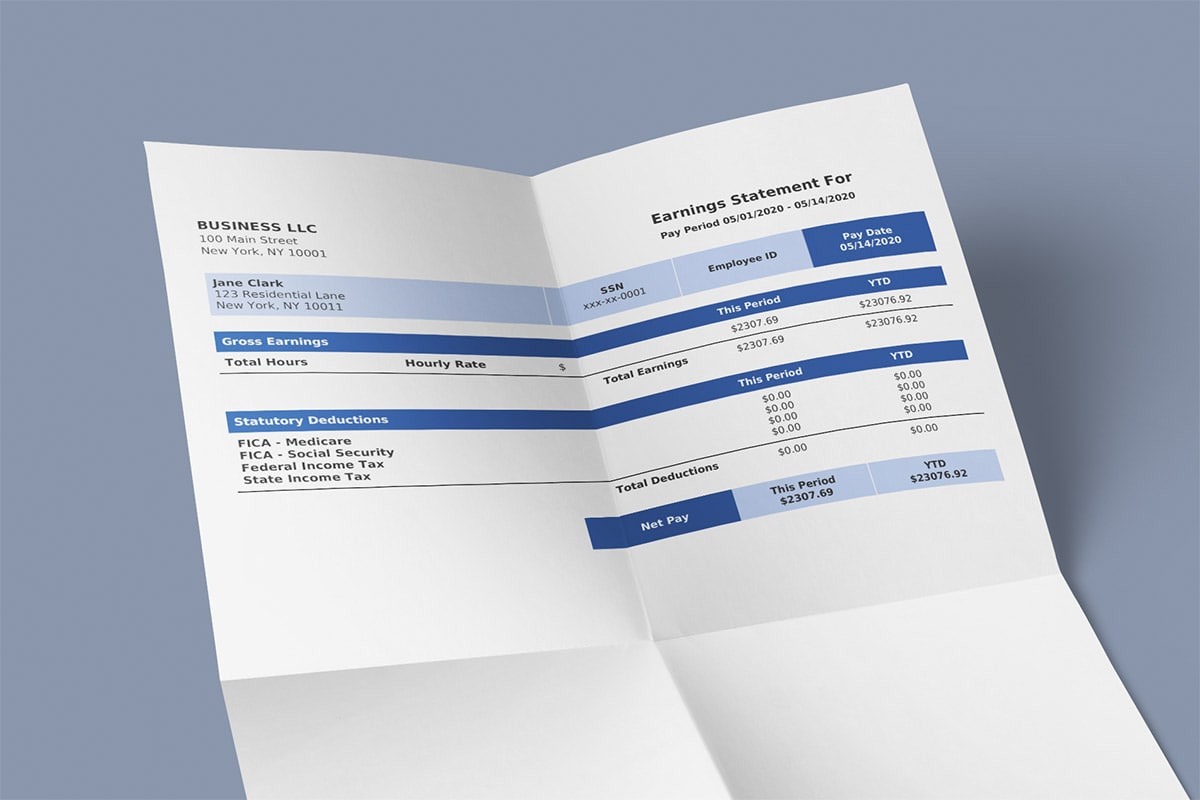4 Common Mistakes While Making Paystubs

Well-managed businesses work hard to minimize errors.
If you make a mistake, you have to invest time and effort to correct the error, and that means less time spent on growing your business. Creating pay stubs is an important part of the payroll process, and you need systems in place to produce accurate documents.
This article defines pay stubs, explains the importance of a Form W-4, and outlines the information needed to create a pay stub. You’ll read about four common paystub mistakes, and how the FormPros pay stub generator can help you avoid them.
What is a Pay Stub?
A pay stub lists all of the key information related to an employee’s pay.
When you review a pay stub, it’s important to note the difference between current (current pay period) and year-to-date (YTD) amounts. Both are important, and the YTD balances help the employer and the worker understand if the amounts are correct.
The pay stub provides information on wages, tax withholdings, and benefit withholdings.
The rules regarding pay stubs vary by state. Some states require employers to provide pay information to workers, while other states do not. Businesses should confirm the requirements in each state where they employ workers.
Employees should keep their most recent pay stubs as proof of income. If an individual applies for a loan, the pay stub confirms the borrower’s gross income. Employers should keep pay stubs on file, if they are generated.
The pay stub information should match the data on each employee’s W-2 form, which individuals used to file their personal tax returns.
To create a pay stub, the first step is to have each employee complete a Form W-4.
Working with Form W-4
The Employee’s Withholding Allowance Certificate (Form W-4) is a form that the federal government requires employees to fill out when they are newly hired. Information submitted on the form (allowances) lets employers know how much salary to withhold from a paycheck for tax purposes.
Keep these points in mind:
- As an employer, you should keep an employee’s most current W-4 form in his or her payroll file. The IRS may request a copy of the form.
- You need to make sure that you add the correct number of allowances into your payroll processing system.
The W-4 collects the worker’s basic information (name, address, filing status) and provides guidance for employees who have multiple jobs, or who have working spouses. There are extra resources provided to calculate withholdings for these situations.
Once you have a completed W-4, you’ll need to collect additional information for the pay stub.
Information Needed to Create a Pay Stub
Determine this information for each employee:
- Payroll cycle: The number of pay periods determines how much salary is paid on each payroll date. It also determines the start and ending days for computing hourly payroll.
- Wages: Gross pay and net pay. Wages may be based on a salary, or calculated using an hourly rate of pay.
- Tax withholdings: Federal, state, and possibly local amounts withheld for taxes.
- Benefit withholdings: Amounts withheld for the employee’s share of insurance premiums, or funds to be invested in a retirement plan.
Here are four common mistakes that businesses make when generating pay stubs.

4 Common Paystub Mistakes
Review your pay stubs carefully, to avoid these mistakes:
#1: Current period vs. year-to-date data
Your workers must clearly understand the differences between current period and year-to-date information. If you don’t label each dollar amount correctly, your staff will be confused.
Workers use year-to-date data to confirm that their gross wages, tax withholdings, and benefit contributions are on track.
#2: Outdated W-4 information
Your employees may need to change tax withholdings, based on a pay raise, having a child, or if a worker gets married. You need the current W-4 to process payroll correctly. Create a system to ask for updated W-4 information, and to use the updated form for the next payroll run.
#3: Incorrect pay cycle
Workers need to plan their finances based on your company’s pay cycles. It’s critically important that your pay stubs clearly state the pay date, and that workers understand how frequently pay is processed (weekly, bi-weekly, monthly).
#4: Incorrect tax data
The federal and state tax laws change constantly, and your pay stub must include withholdings based on current tax law. If the withholdings are not correct, the worker may have an unexpected tax liability at the end of the year, and possible owe penalties for underpayment of taxes.
Minimize Pay Stub Errors With FormPros
Employers need to generate accurate pay stubs, and using technology can help.
FormPros provides a pay stub generator that is user friendly, and helps you produce accurate pay stubs in less time. The software automatically calculates earnings and deductions, based on the information you input. Your data is also processed in a secure online system.
Use FormPros to take charge of the pay stub process.
Which payroll task is the most difficult for you?